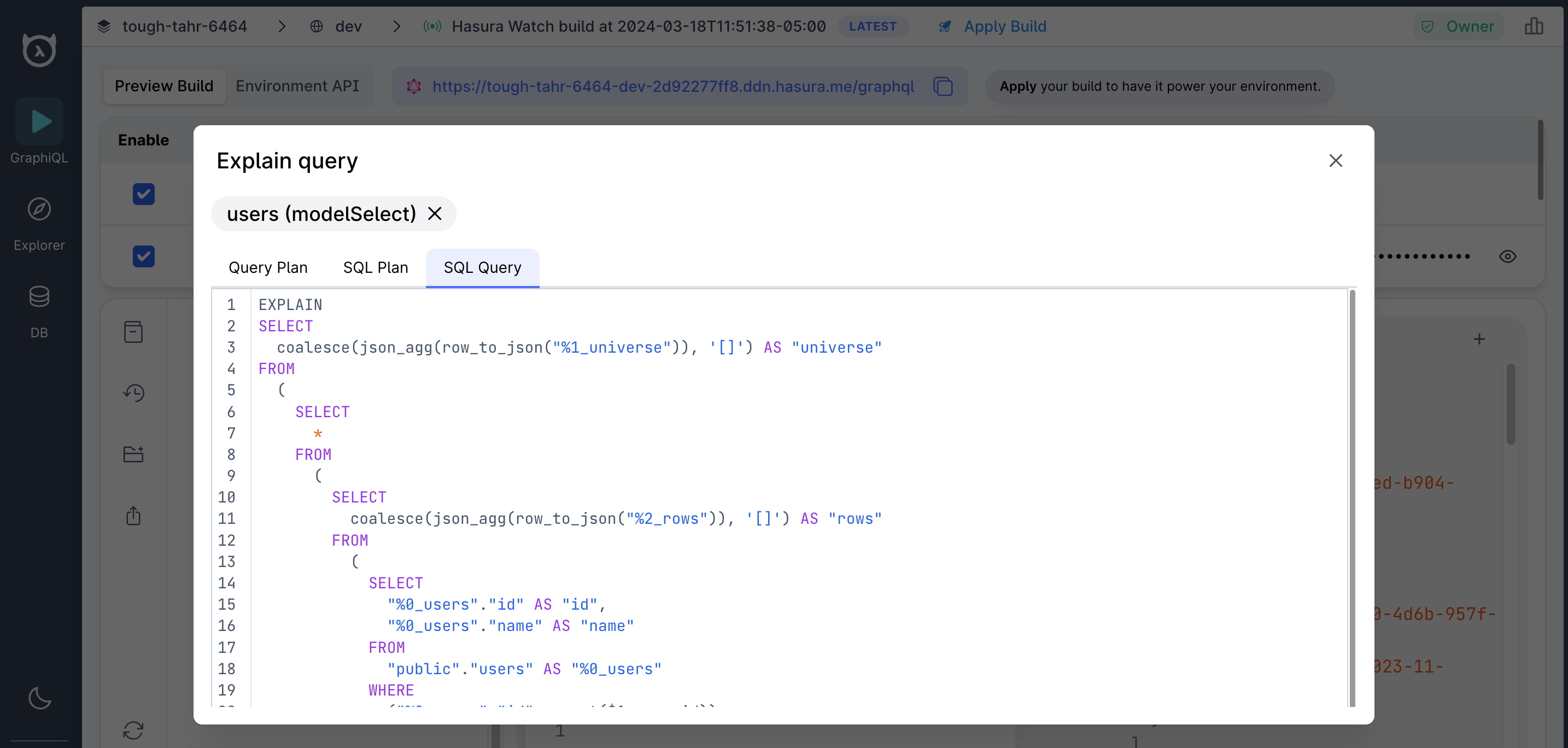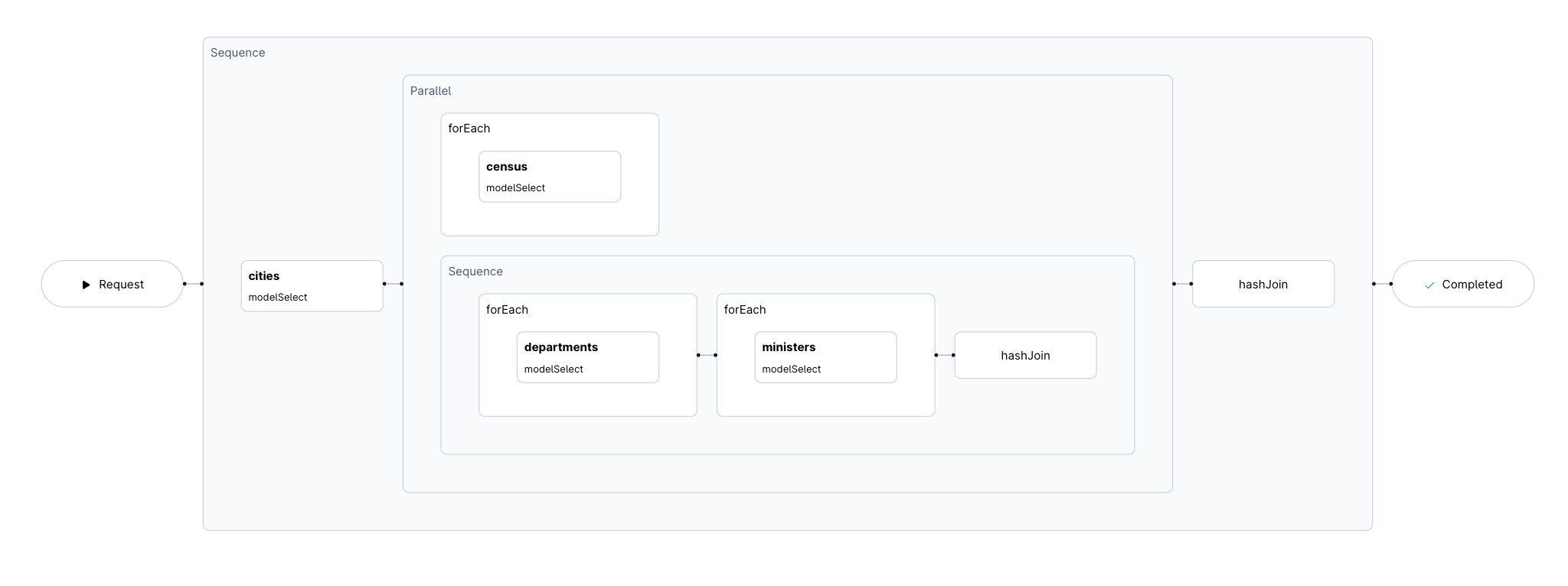Hasura Query Plan
The Hasura v3 engine can output the GraphQL execution plan for a given query via the "explain" API.
The execution plan output is represented as a tree of type ExplainStep. You can also visualize the query
plan, SQL plan, and SQL query used for each execution by clicking the Explain query button in your GraphiQL's request
field:

ExplainStep
The ExplainStep output can be one of the following:
| ExplainStep | Description |
|---|---|
| ModelSelect | A select on the data connector's model |
| CommandSelect | A select on the data connector's command |
| ForEach | A for-each loop on the data returned by the parent step |
| HashJoin | A hash join of the data returned by the steps to construct valid response |
| Sequence | A sequential execution of steps |
| Parallel | A parallel execution of steps |
ModelSelect
A ModelSelect step represents fetching data from a Model. This includes fetching
across local relationships. For example, the following query's execution plan will be a ModelSelect only:
query LocalRelationship {
cities {
# Backed by a model
code
name
state {
# Local relationship
name
}
}
}

Click here for the API reference of ModelSelect.
CommandSelect
Just like the ModelSelect, a CommandSelect represents fetching data from a
Command. Click here for the API reference of
CommandSelect.
ForEach
A ForEach step represents fetching data from a DataConnector for each of the data from the parent node. A ForEach
will always be present if we need to fetch some additional data (such as from a remote
relationship) for the data returned by the parent node. For example, the
following query's execution plan will have a ForEach step:
query RemoteRelationship {
cities {
# Backed by a model
code
name
weather {
# Remote relationship
forecast
}
}
}

HashJoin
A HashJoin step represents joining the data fetched from two different steps. For example, the above query's execution
plan will have a HashJoin step for joining the Weather model to City.
Sequence
A Sequence step represents a sequential execution of steps. For example, the following query's execution plan will
have a Sequence step (as we need to fetch a Weather instance for each of the City models fetched):
query RemoteRelationship {
cities {
# Backed by a model
code
name
weather {
# Remote relationship
forecast
}
}
}

Parallel
A Parallel step represents a parallel execution of steps. For example, the following query's execution plan will have
a Parallel step (as we can fetch Department and Census in parallel):
query ParallelExecution {
cities {
# Backed by a model
code
name
departments {
# Remote relationship
name
ministers {
name
}
}
census {
# Remote relationship
data
}
}
}

Example
In the example below, for each user, we are fetching the user's name, their notifications via a local relationship, and their favorite artists from a remote relationship:
query MyQuery {
users {
name
# local relationship
notifications {
id
message
}
# remote relationship
user_to_favorite_artist {
name
}
}
}

Now, from the explain plan, we can understand that:
- There are three sequential steps:
- Make a selection on the
usersmodel - For each user, make a selection on the
artistsmodel
- Make a selection on the
- HashJoin the
usersandartistsmodels to construct the response
